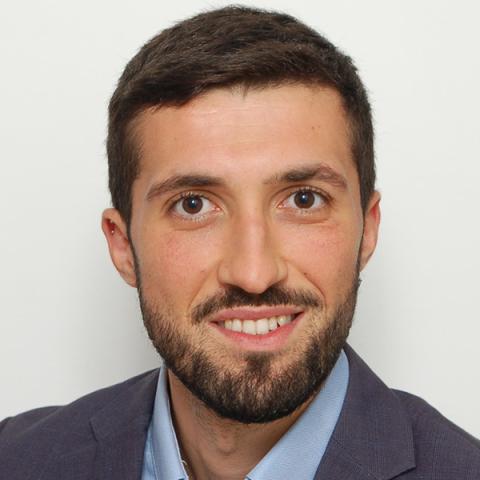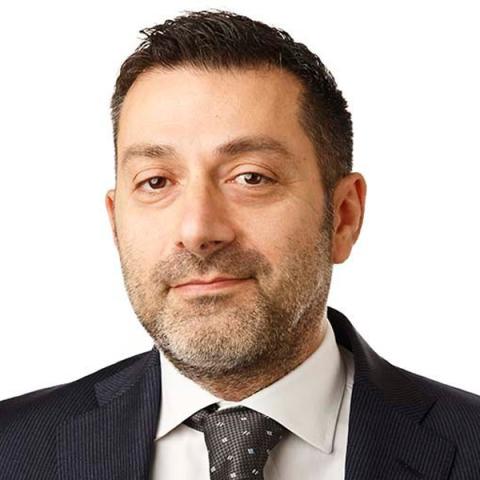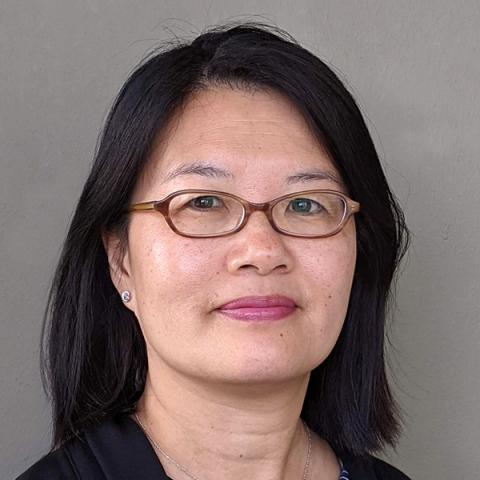Donor coordination in times of crisis: the importance of resilient value chains for food security
Climate change, the COVID-19 pandemic and the most recent events in Ukraine are bringing havoc and disruption to food and agricultural value chains[1]. As a result, international prices for energy and agricultural commodities are increasing at alarming rates, pushing the cost of food to levels not seen since the global food crises of 2008 and 2011.[2]While high food prices can be largely absorbed between producers and consumers in high-income countries, even slight price increases can have disastrous consequences for food security in the Global South, where consumers in low- and middle-income countries spend almost half of their incomes on food.[3]
In this context of dire food insecurity, global donors (bilateral and multilateral development agencies, as well as philanthropic foundations) have an important role to play to mitigate the effects of the crisis. Nevertheless, their resources are finite and dwarfed by those made available by national governments and the private sector. That is why ensuring coordination between donors is even more important now to tackle the impact of disruptions on food supply chains that are playing a major catalytic role in transforming food systems.
Catalysing change through better alignment and coordination
The Global Donor Platform for Rural Development (GDPRD) is a network of key donors. It includes 40 bilateral and multilateral development agencies, international financial institutions, intergovernmental organizations and foundations that work in the agriculture and rural development sectors and share a common vision framed around pathways to achieve “zero hunger.” This vision includes advocating for a radical transformation of food systems, for better access to safe and nutritious food, improved environmental sustainability and more prosperous rural communities.
The UN Innovation Toolkit provides development professionals with a useful array of resources to improve readiness and scale up efficiency, contributing to the decision-making process and to the achievement of innovation goals.
We will try to answer some basic questions related to a few issues of interest to the platform. How do donors need to adapt their policies, approaches and strategies in times of crisis and beyond? How can we make value chains more resilient in the future? Two innovation tools from the UN innovation toolkit were used to examine these questions and suggest answers to guide the innovation pathway of the platform.
Effective partnerships to innovate the way we work
“Define a Value Proposition” is the first tool we analysed and worked with, to enable us to make better decisions when identifying and finding the right partnerships, a critical aspect if we are to share innovative ideas and practices that can generate a collective impact.
The first important element for an effective approach of finding potential partners is knowing your organization’s unique value, information that could help build a more precise proposition to present to a specific audience. The platform’s unique value lies in its role as an advocate and a knowledge broker, through a network of donors that can effectively deliver knowledge and learning in support of agriculture, food systems and rural livelihoods.
We believe that only by aligning our donors’ endeavours can we achieve ambitious goals such as Sustainable Development Goal (SDG) 2, as well as its targets that require a strong level of coordination among different actors and stakeholders.
Making good partnership choices will also depend on the self-awareness of an organization’s priorities, gaps and goals, which in turn, requires a deep knowledge of its network of existing partners. Thanks to the step-by-step guidance provided by this tool, I was able to better identify our innovation goals and the type of partnership that can help us advance them, allowing me to create a targeted value proposition to engage a new audience of potential partners.
During preparations for the platform’s high-level event in April (The Increasing Imperative for Resilient Food Systems in Times of Crisis: What Can Donors Do?) my task as an intern was to expand the invitation list. The value proposition tool contributed to sharpen the profile of potential new participants and based on the specifics of that profile, I identified new invitees beyond our current network within research institutions, global and regional foundations, farmers’ and civil society organizations. By analysing social media activities around food security and food systems on channels like LinkedIn and Twitter, I was able to identify new groups to invite from the fields of academia, advocacy and communications, and international development. As a platform that strives to ensure better alignment and coordination among donors and development partners, this tool will continue to play a role in expanding our community of partners.
Looking at the big picture to mitigate future risks
The critical importance of enhancing the resilience of food systems to protect against future shocks was a core message from the 2021 UN Food System Summit (FSS). This is particularly important in terms of protecting the nutrition and livelihoods of poorer groups in society and those who live in vulnerable contexts.
This need has been highlighted by the impacts of the COVID-19 pandemic, recent droughts and locust plagues. It becomes even more important in the context of the impacts of climate change, including increasing extreme weather events, rapid biodiversity loss and changing patterns of pest and disease outbreaks. Additionally, as we witness the negative impact of conflict on food systems, our community of donors is acknowledging the need for increased coordination and preparedness, to prevent and tackle such scenarios in the future.
The “Scenario Blueprint” tool helps analyse and assess the conditions around us, to grasp the next decisions the platform may make. The first step entails asking ourselves questions about the driving forces that may shape the environment we’re working in, determining not only risks but also opportunities of new scenarios that may arise. For example, current demographic trends show how an increasing pressure on labour markets can occur in the future, while new technology could completely change the dynamics and the framework in which the platform operates.
Tools such as the scenario blueprint may serve as a compass to guide the decision-making process of any partnership network, including the donor platform. For this reason, utilising the “scenario blueprint” tool could be a fundamental resource when working in a changing social and political landscape. This tool can help steer and determine the platform’s thematic focus, to remain on message and develop activities which are relevant to emerging challenges for donors in food security and rural development. This ensures the platform and its members are prepared to take advantage of these new opportunities and stay relevant in current debates. This could help the platform in providing increased knowledge to improve future coordination and effectiveness.
Transforming food systems: Directions for enhancing the catalytic role of donors
Tackling challenges and preventing the impact of future crises requires us to have a clear action plan for our members and development partners. As a result, the GDPRD recently released its white paper "Transforming Food Systems: Directions for Enhancing the Catalytic Role of Donors", to provide international donors with a menu of options to redesign global food systems, to make them more resilient and sustainable in the longer-term.
As emerged in the white paper, transforming food systems will have three overarching implications for donors, which include tackling structural barriers to change, adopting a systemic approach and enabling coordination, alignment, integration and coherence among development partners.[4]
In this context, the white paper details actions that can be taken by donors across seven action areas to find a way forward in these turbulent times and beyond. The action areas from our white paper emphasize the centrality of innovation, ranging from investing in research and data systems to mobilizing responsible investment from the public and private sectors and supporting policy innovation[5].
Following the publication of the white paper, the GDPRD has been using this essential set of tools to develop an innovative and forward-looking strategy for the platform, to expand our engagement with institutions and foundations to also include private sector actors. Our newly identified audience groups will be included in our outreach communications around the white paper such as our newsletter. Also, these tools can be very effective at enhancing the white paper's visibility and solicit engagement on social media, around current relevant themes that could be of interest for our donor community.
How the UN Innovation Toolkit may help creating resilient value chains
Coordination is critical in times of crisis, and it is now clear that crises and conflicts, including those triggered by climate change will occur in the near future, with massive impacts on rural development and food systems. There is a clear need for resources and more importantly, planning and coordination to tackle the crises of today and tomorrow. These crises further underline the need to strengthen value chain resilience in our food systems, which will require a long-term transformation.
For these reasons, we believe that the two innovation tools we used (“Define a Value Proposition” and “Scenario Blueprint”) could be crucial for any platform or organization wanting to make an impact through coordination and proactive collective action and not only in food systems. Adopting resources such as the ones provided by the UN Innovation Toolkit could be key to make innovation a core element of the UN system. By sharing best practices and targeting the specific needs of international organizations, the tools may improve coordination between various stakeholders, enhance the decision-making process and eventually help meet the 17 Sustainable Development Goals.
By following the tools, the platform was able to better identify new potential participants for its high-level events and find clearer understanding of the context it operates in to keep its future thematic focus and messaging always relevant.
[1] Dongyu, Q., “New Scenarios on Global Food Security based on Russia-Ukraine Conflict”, Food and Agriculture Organization of the United Nations, 03.11.2022. (https://www.fao.org/director-general/news/news-article/en/c/1476480/)
[2] International Food Policy Research Institute (IFPRI), “Covid-19 and global food prices: what is really happening”, 02.11.2022. (https://www.ifpri.org/blog/covid-19-and-rising-global-food-prices-whats-really-happening)
[3] Food and Agriculture Organization of the United Nations (FAO), “The importance of Ukraine and the Russian Federation for global agricultural markets and the risks associated with the current conflict”, 03.2022. (https://www.fao.org/3/cb9013en/cb9013en.pdf)
[4] Global Donor Platform for Rural Development, “Transforming food systems: directions for enhancing the catalytic role of donors”, page 19, 2022. (https://www.donorplatform.org/publications-about-us-detail/white-paper.html)
[5] Idem, page 21.


